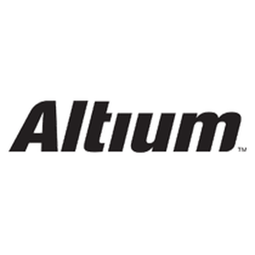Technology Category
- Networks & Connectivity - Ethernet
- Sensors - Autonomous Driving Sensors
Applicable Industries
- Electronics
- National Security & Defense
Applicable Functions
- Product Research & Development
Use Cases
- Theft Detection
- Time Sensitive Networking
Services
- System Integration
- Training
About The Customer
BAE Systems Australia is a leading global defence company that designs, manufactures, and supports a wide range of defence products, including military aircraft, surface ships, submarines, space systems, radar, avionics, electronic systems, and guided weapons. The company has key skills in engineering and systems integration and is a leading supplier of electronic warfare, communications, military air support, software, and support services to the Australian Defence Force. BAE Systems Force Awareness and Protection Unit designs, develops, integrates, and supports electronic warfare systems, ground-based mission support for Airborne Early Warning and Control (AEW&C), High Frequency (HF) radar, weapon systems, and integrated autonomous systems.
The Challenge
Monitoring Australia’s vast northern coastline is a crucial part of the country's national security program. However, the enormous area involved presents the challenge of detecting objects beyond the horizon. The Australian Defence Force’s (ADF) Jindalee Over The Horizon Radar (OTHR) system, near Alice Springs in central Australia, overcomes the normal range limitations caused by the earth's curvature by bouncing signals off the ionosphere using a series of antennas that stretch over 3.4 kilometres. BAE Systems Australia, a leading global defence company, supports the ongoing development of the super-sensitive Jindalee radar with advanced receiver and signal processing systems that help to extend the capabilities of the ADF’s Jindalee Operational Radar Network (JORN). However, creating these systems requires BAE Systems to remain at the cutting edge of HF radar technology, including the development of RF and high-speed data processing systems. Typical HF projects require up to 10-layer FR4 boards that comply with strict performance goals in both the analog and digital domain, necessitating advanced tools and design systems for the successful development of the OTHR subsystems.
The Solution
The BAE Systems HF radar development group has been using Altium Designer for board development for around six years, progressing through an upgrade path to its current Altium Designer 6 licenses. The increase in features and performance of the design solution during this time has kept BAE Systems’ engineers at the forefront of board design technology and equipped them with the capabilities needed to develop the highly sophisticated board designs required to enhance the OTHR system. Altium Designer’s unified board-level design capabilities, such as powerful Signal Integrity analysis, differential pair support, and automated FPGA pin optimization, have improved project time frames while ensuring that designs perform as expected early in the development cycle. In an environment where cutting-edge performance is a core design criteria, Altium Designer’s unified design solution provides BAE Systems with the sophisticated board development capabilities required to meet its goals.
Operational Impact
Quantitative Benefit

Case Study missing?
Start adding your own!
Register with your work email and create a new case study profile for your business.
Related Case Studies.

Case Study
Remote Temperature Monitoring of Perishable Goods Saves Money
RMONI was facing temperature monitoring challenges in a cold chain business. A cold chain must be established and maintained to ensure goods have been properly refrigerated during every step of the process, making temperature monitoring a critical business function. Manual registration practice can be very costly, labor intensive and prone to mistakes.

Case Study
Predictive maintenance in Schneider Electric
Schneider Electric Le Vaudreuil factory in France is recognized by the World Economic Forum as one of the world’s top nine most advanced “lighthouse” sites, applying Fourth Industrial Revolution technologies at large scale. It was experiencing machine-health and unplanned downtime issues on a critical machine within their manufacturing process. They were looking for a solution that could easily leverage existing machine data feeds, be used by machine operators without requiring complex setup or extensive training, and with a fast return on investment.

Case Study
Cloud Solution for Energy Management Platform-Schneider Electric
Schneider Electric required a cloud solution for its energy management platform to manage high computational operations, which were essential for catering to client requirements. As the business involves storage and analysis of huge amounts of data, the company also needed a convenient and scalable storage solution to facilitate operations efficiently.

Case Study
Leveraging the IoT to Gain a Competitive Edge in International Competition
Many large manufacturers in and outside Japan are competing for larger market share in the same space, expecting a growing demand for projectors in the areas of entertainment, which requires glamor and strong visual performance as well as digital signage that can attract people’s attention. “It is becoming more and more difficult to differentiate ourselves with stand-alone hardware products,” says Kazuyuki Kitagawa, Director of Service & Support at Panasonic AVC Networks. “In order for Panasonic to grow market share and overall business, it is essential for us to develop solutions that deliver significant added value.” Panasonic believes projection failure and quality deterioration should never happen. This is what and has driven them to make their projectors IoT-enabled. More specifically, Panasonic has developed a system that collects data from projectors, visualizes detailed operational statuses, and predicts issues and address them before failure occurs. Their projectors are embedded with a variety of sensors that measure power supply, voltage, video input/ output signals, intake/exhaust air temperatures, cooling fan operations, and light bulb operating time. These sensors have been used to make the projector more intelligent, automatically suspending operation when the temperature rises excessively, and automatically switching light bulbs. Although this was a great first step, Panasonic projectors were still not equipped with any capability to send the data over a network.









